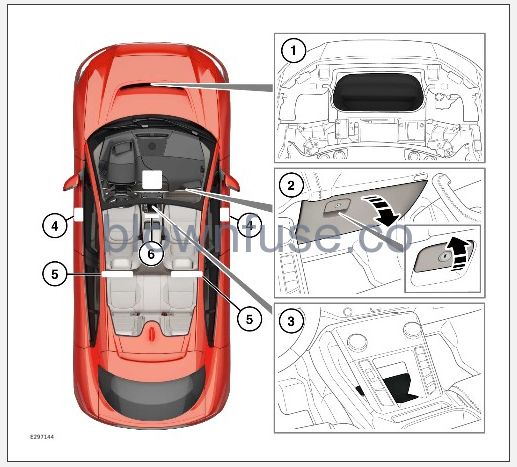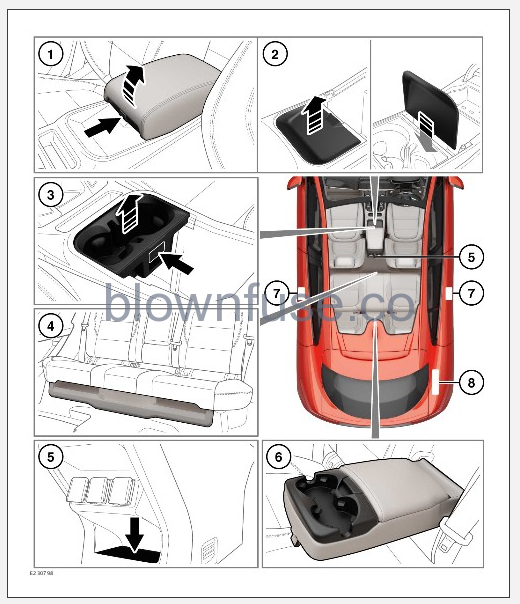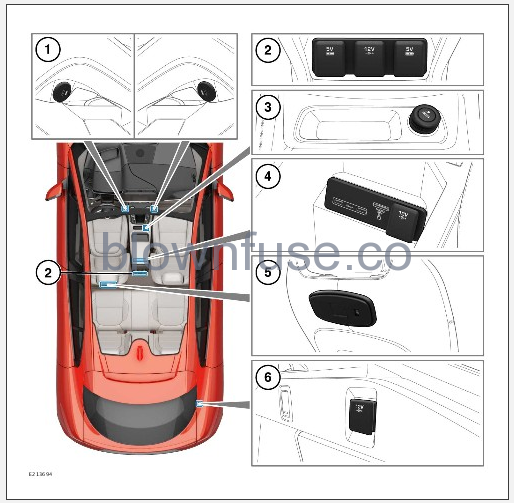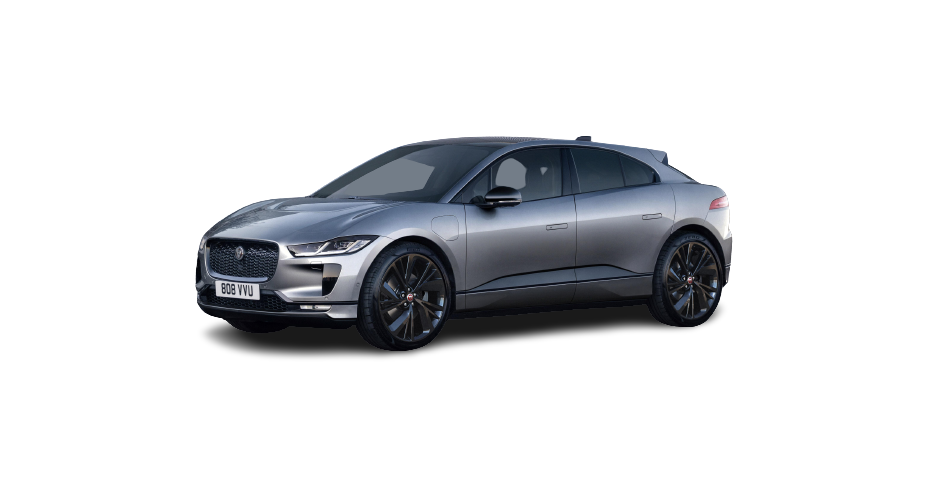 2023 Jaguar I-Pace Storage Compartment
2023 Jaguar I-Pace Storage Compartment

STORAGE COMPARTMENTS

Make sure that any items stored in the vehicle are secure and cannot move. If the vehicle is involved in an accident, or is subject to sudden braking or a change of direction, loose items can cause serious injury.
Storage compartment locations:
- Front storage compartment.
- Glovebox: Pull the release handle to open.
- Centre console storage bin.
- Front door storage bins.
- Front seat map pockets.
- Centre console coin bin.

- Cubby box: Push and hold the release button. Lift the lid to open the cubby box. To close the cubby box, lower the lid and lightly press to engage the catch.
- Removable coin tray: The removable coin tray can be stored vertically in the cubby box.
NOTES
When the cup holder is removed, placing the coin tray in the cubby box, subdivides the space into two smaller storage areas. - Removable front cupholders: To remove the cup holder assembly, open the cubby box lid and pull the release handle on the rear end of the assembly.
NOTES
A hidden storage area is located under the cup holder assembly.WARNING
Do not drink while driving. Driver distraction can lead to accidents, potentially causing serious injury or death.WARNING
Do not remove items from, or place items in, the cup holders while driving. Driver distraction can lead to accidents, potentially causing serious injury or death. - Storage bins and umbrella holder under the rear seats.
- Storage bin, located at the rear end of the centre console.
- Rear cup holders: Pull the tag at the top of the stored rear seat’s armrest. Lower the armrest.
- Rear door storage bins.
- Luggage compartment side net.
AUXILIARY POWER SOCKETS
Only use approved accessories. Using any other equipment may damage the vehicle’s electrical system and/or cause battery discharge. If in any doubt, contact a retailer/authorised repairer.
It is recommended to run the electric motor when using accessories for long periods. Failure to do so can discharge the battery.
The number of power sockets fitted is dependent on the vehicle’s specification. The sockets can be used to power approved accessories that use a maximum of 120 Watts.

Auxiliary power socket locations:
- 5V USB socket – passenger side only.
- 12V power socket and two 5V USB ‘C’ sockets at the rear of the centre console.
- Cigar lighter.
- 12V power socket and USB socket inside the cubby box.
NOTES
For data transfer, use either USB socket inside the cubby box. All other USB sockets are for charging only. - 5V USB power socket at the rear of the driver’s seat.
- 12V luggage compartment power socket.
Depending on vehicle specification, the auxiliary power sockets in the rear of the centre console may be arranged as shown:
WIRELESS CHARGER
Metallic objects may become hot if they are placed between the mobile device and the charging mat, which may result in serious injuries.
Do not place anything other than a Qi-compatible mobile device or accessory onto the charging mat. Items such as keys, key fobs, coins, jewellery, paperclips, or foil sweet wrappers may interfere with the wireless charger operation.
The wireless charger is located on the centre console, beneath the climate controls. See DRIVER CONTROLS. The wireless charger provides up to 15 Watts of power to charge Qi-compatible mobile devices.
To use the wireless charger:
- Switch on the vehicle’s electrical system.
- Place the Qi-compatible mobile device in the centre of the mat with the device’s screen facing upward. Align the longer edge of the device with the longer edge of the wireless charging area. Charging commences after a short delay of up to 10 seconds.
Remove the mobile device from the wireless charger to stop the charging process.
The amount of charging current supplied and the time taken for charging are entirely under the control of the mobile device.
The wireless charger continues to charge during any stop/start event.
Aftermarket device cases or enclosures can reduce wireless charging efficiency, or block it altogether. If a Qi-compatible device exhibits problems charging wirelessly, remove any aftermarket cases or enclosures.
Removing the device from the wireless charging mat and replacing it resets the connection.
Dynamic driving could cause the device to move around on the wireless charging area. Dislocation from a flat position on the charge mat may cause the wireless charge process to disconnect briefly. Make sure the device remains flat on the wireless charging mat.
The wireless charger switches off automatically when the mobile device is fully charged.
The following touchscreen icons relate to wireless charging status:
Charging: Indicates a device is on the charging mat and recognised by the system.
Charged: Indicates the mobile device is fully charged.
Foreign object: Indicates a foreign object is detected on the charging mat. Occasionally, the wireless charging system may display this symbol while cooling down. Wireless charging will resume once the system’s temperature has normalised.
The wireless charger mat incorporates a phone signal booster. The phone signal booster is a mobile phone signal enhancer, designed to compensate for reduced reception inside the vehicle’s interior. The phone signal booster operates by selectively boosting signals into and out of the mobile phone via an external antenna. The phone signal booster operates automatically when a phone is placed on the charging mat. There is no need to connect or set up the phone signal booster.
The phone signal booster cannot enhance mobile phone reception in areas where there is no signal available
